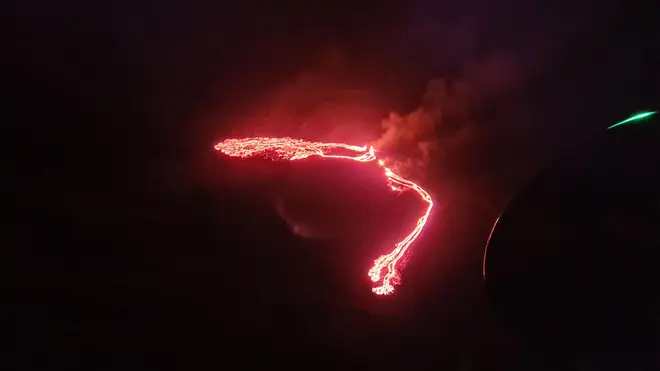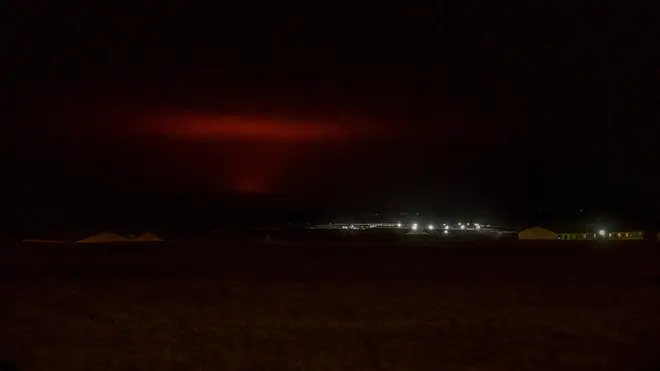
Matt Frei 10am - 12pm
20 March 2021, 00:52

A volcano has erupted in Iceland around 20 miles (32km) south-west of the capital Reykjavik, the country's meteorological office has said.
Red clouds lit up the night sky on Friday and a no-fly zone has been established in the area after the eruption at Fagradalsfjall on the Reykjanes peninsula.
The Icelandic Meteorological Office (IMO) is warning the public to stay away from the area due to falling rocks, falling boulders and potential landslides.
When another volcano, Eyjafjallajokull, erupted in the north-western European country in 2010, the disruption brought air traffic to a halt across the continent.
A new video of the eruption at Geldingardalur valley in Reykjanes peninsula. Taken from the Coast Guard helicopter. #Reykjanes #Eruption #Fagradalsfjall pic.twitter.com/B862heMzQL
— Icelandic Meteorological Office - IMO (@Vedurstofan) March 19, 2021
However, this event is not believed to present any danger as the volcano is not expected to spew out as much ash or smoke.
A spokesperson for the IMO wrote in a tweet: "Volcanic eruption has begun in Fagradalsfjall."
Fagradalsfjall is a mountain situated in the Krysuvik volcanic system around 20 miles outside the country's capital city.

Another tweet posted by the IMO said: "The source of the volcanic eruption began at Geldingadalur, close to Fagradalsfjall on the Reykjanes Peninsula."
The southern end of the lava flow is about 1.6 miles (2.6 km) from Suðurstrandarvegur, the institute said.
It added: "According to initial information, the fissure is about 200 m long."
The source of the volcanic eruption began at Geldingadalur, close to Fagradalsfjall on the Reykjanes Peninsula. pic.twitter.com/JIbXnsmH7o
— Icelandic Meteorological Office - IMO (@Vedurstofan) March 19, 2021
A coastguard helicopter was deployed to the region and sent images of the lava flow following the eruption.
The IMO said on its website: “The first notification was received by the Meteorological Office at 2140 GMT. The eruption was confirmed through webcams and satellite images.”
A 3.1 magnitude earthquake was recorded three-quarters of a mile (1.2 km) from Fagradalsfjall several hours earlier.